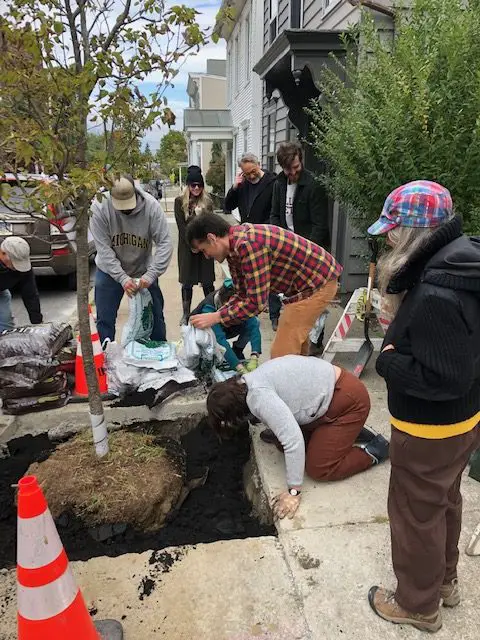With the Hudson Valley having so much undeveloped land and New York state estimating that forests and woodlands make up 67% of the region”™s landscape, some people might find the idea of planting more trees in the Hudson Valley to be redundant. That”™s certainly not true of the organizations Partners for Climate Action Hudson Valley (PCA), which is based in Chatham, New York, and Street Trees for the City of Hudson Conservation Advisory Council (CAC).
In keeping with the theme that taking on the stewardship of the environment is key to stemming the negative effects of ecological decline and climate change, CAC was recently awarded an Ecological Restoration Grant in the amount of $32,075 from PCA to aid them in a major tree planting project in the City of Hudson.

In another move to bring even more trees to Hudson, a CAC member, Hilary Hillman, arranged a grant from the state”™s Department of Environmental Conservation to plant 64 ornamental trees along Harry Howard Avenue.
Hudson has been identified as having the smallest ratio of hardscape to green space of any municipality in Columbia County. CAC is hoping to solve the imbalance by strengthening its tree canopy with an extensive tree planting project and emphasizing a more landscape-driven urban design.
“Science has shown that cities are part of an ecology: water, air, animals, plants and humans interact as a living system,” Britt Zuckerman, senior landscape architect with Dirtworks Landscape Architecture and a volunteer with CAC managing the project told the Business Journals. “Putting landscape at the center of long-term planning can serve as a catalyst for improved quality of life and infrastructure.”
The immediate plan involves the installation of 25 large-diameter street trees in areas of the city that are predominantly home to low-income families in Hudson”™s second and fourth wards that have a measurable lack of street tree coverage. The trees will be planted throughout a span of several weeks in Spring and Fall.
“We will collaborate with the organizations that serve these populations directly to include and educate these impacted families on the effort to improve the local tree canopy,” said Zuckerman.
The goal is to plant 25 new trees every year to balance the city”™s urban ecosystem and to accomplish multiple objectives, including: making the city more beautiful; improving the appearance and safety of sidewalks; absorbing stormwater runoff; lowering winter heating and summer cooling costs; absorbing air pollution; and dampening noise.
In 2021, the CAC sponsored the celebration of Hudson”™s first Arbor Day. Five street trees were planted in 2021 and five in 2022 with funds from community donors.
“Our city has many invasive species with very few large caliper trees along the streetscape,” said Zuckerman. “The larger caliper helps ensure the health and long-term survival of the tree.”
The CAC is comprised of volunteers with diverse backgrounds in ecology, environmental concerns, education, community and planning. Its mission is to advise elected city officials on environmental issues and their impact on the health and safety of the residents, the health of the ecology, the stability of the built environment and the livability of the city, all of which need to be considered when creating legislation or policy.
The PCA grant money also will help pay for new soils and fertilizers to replenish depleted clay soils and the purchase of native perennials to plant around tree beds.
The CAC hopes that green infrastructure becomes integral to Hudson”™s urban design.
“The rich history of the Hudson Valley is one rooted in stewardship of the land,” said Zuckerman. “The city of Hudson must prioritize the landscape so that it”™s able to enhance social, economic and environmental outcomes. We want to see positive effects on mobility, community cohesiveness, health, carbon, soil, equity and economic development, among other benefits. We will be reaching out to the community because we will not only need help, but we also feel that large group undertakings instill a sense of ownership and pride and this will aid in the stewardship of the trees.”
Zuckerman also noted that the group wants to involve youngsters in its work and encourage them to appreciate trees.
“What a great sense of pride and community effort children will feel as they walk to school knowing that these are trees they helped plant,” Zuckerman said.




















